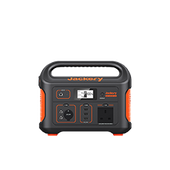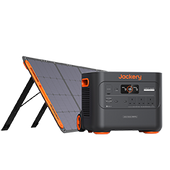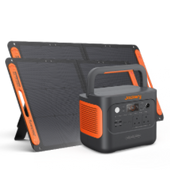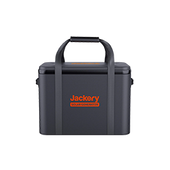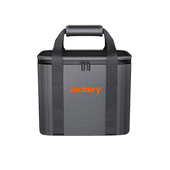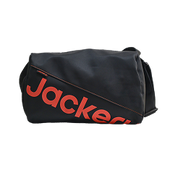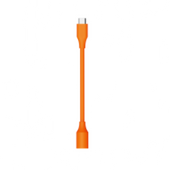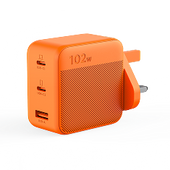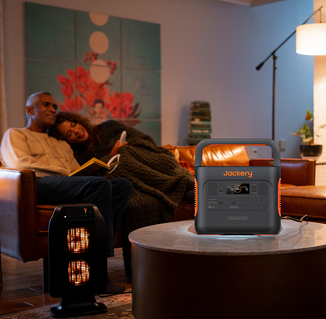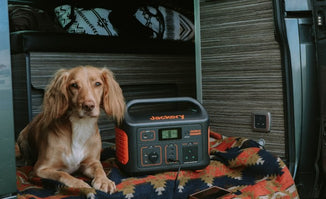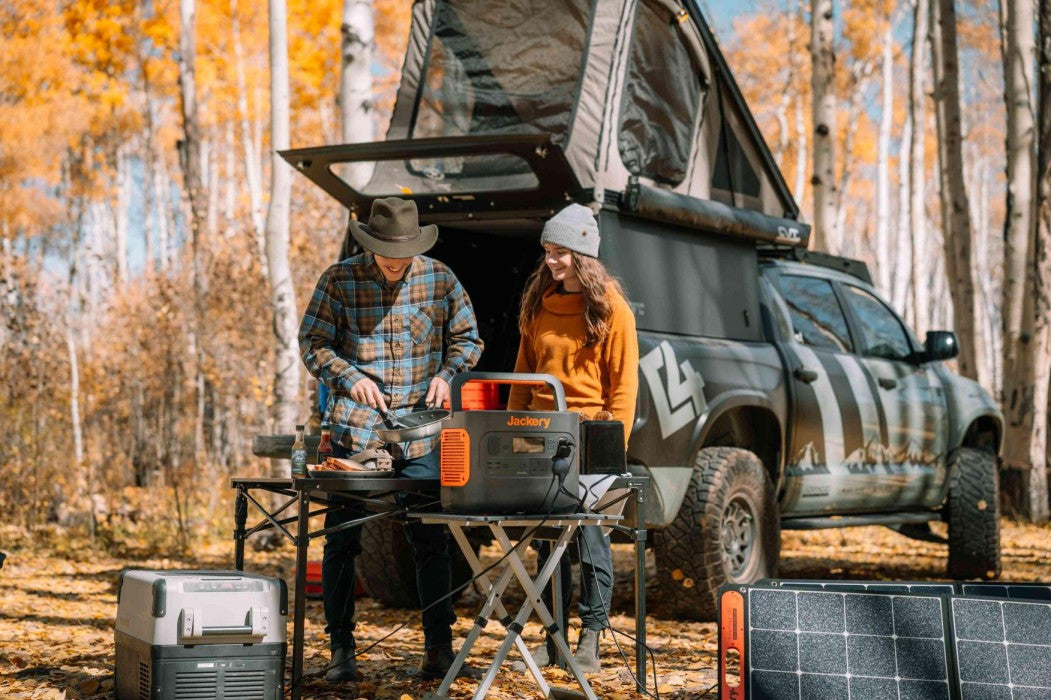We acknowledge that most of us will most likely encounter significant disruptions in the flow of products and electricity at some point in our lives in the world of terrorist attacks, global warming, and superstorms that we live in today.
It doesn't take much time or money to learn new skills, build a few emergency contingency plans, and stock up on additional supplies - all low-cost insurance that can bring comfort during trying times.
It's impossible to predict what the future holds. Although it is impossible to account for every eventuality, a prudent individual prepares for some of the most likely ones and keeps a minimum amount of essential supplies in an emergency. You will learn how to prepare a survival pack from this site. You will discover the necessities and how to restock your survival bag promptly.
|
Key Takeaways: |
|
Because emergencies can happen anytime, having a well-stocked and customised survival pack is essential. Basic survival necessities, including food, water, first aid supplies, and suitable shelter alternatives, should all be included in a survival pack. Keep your supplies ready for emergencies by inspecting and restocking your survival kit to ensure everything is working and fresh. Power is far more critical in an emergency, so preparing an emergency generator in your survival pack could be vital. We recommend Jackery Explorer 300 Plus and 100 Plus in your bag to charge essential devices. |
Why Is A Survival Pack So Important?
It's simple to take our safety and the conveniences of contemporary living for granted in today's fast-paced society. We're used to having food and drink readily available, feeling secure in our houses, and having emergency services available.
But it's essential to remember that unanticipated events and emergencies might occur at any time. For this reason, it's necessary to have a well-stocked survival pack on hand.
Unpredictable Emergencies: Natural catastrophes can happen suddenly, including storms, floods, wildfires, and earthquakes. Similarly, unforeseen circumstances such as power outages, car problems in isolated locations, or getting lost on a walk might put you in danger. An adequately supplied survival kit can save lives in these kinds of circumstances.
Immediate Access to Essentials: There is never enough time when an emergency arises - having a pre-made survival kit on hand guarantees that you will have quick access to necessary materials. You won't have to run around looking for things or run the danger of forgetting essentials. Your safety and well-being may significantly change as a result of your preparedness.
Customisation: You may customise survival packs to fit your unique requirements and situation. Customise your outfit based on whether you're getting ready for a long-term camping vacation or a brief power outage. Add necessities like water, dry food, first aid kits, communication devices, and situation-specific gear.
Peace of Mind: It comforts you to know that you have a fully equipped survival kit. It assures you that you can deal with unforeseen circumstances, which can lessen anxiety and tension in times of crisis. Being mentally ready might be as crucial as having the suitable materials in your kit.
Long-Term Benefits: Not only are survival kits applicable in dire circumstances, but they can also be helpful in regular circumstances. Multi-tools, flashlights, and first aid kits are examples of items that can be useful for various jobs and small situations. Because of this, a survival kit is a flexible investment in your security and readiness.
Download The Survival Pack PDF Checklist >>
Survival Pack Checklist in The UK
When assembling your kit, place all the components in sealed plastic bags and put the entire kit inside one or two duffel bags or plastic bins that are convenient to carry. The following suggested things could be included in a basic survival pack:

Shelter: In times of need, shelter is essential. A lightweight tent, a bothy bag (a transient shelter that resembles a tent), a waterproof tarp, an all-weather blanket, or a bivi bag (a compact waterproof survival bag) are some options for outdoor shelter. Furthermore, ponchos, foil blankets, and sleeping bags are practical and valuable outdoors.
|
*Tips for Survival Shelter |
|
|
Bivi Bag |
A compact waterproof survival bag. |
|
Bothy Bag |
Tent-like temporary shelter. |
|
Foil Blanket |
Heat-reflecting and waterproof. |
|
Tarp |
Use as a ground-sheet, canopy, blanket. |
|
Sleeping Bag |
If you have the space. |
|
Tent |
If space allows. |
Food: Add enough ready-to-eat, shelf-life food to last each individual at least three days, but preferably seven or ten. You can stockpile emergency survival supplies, long-term prepared meals, or canned food.
|
*Tips for Survival Food |
|
|
MREs |
Sealed ready to eat meals. |
|
Survival Rations |
Long life survival biscuits. |
|
Energy Tablets |
Sweets or dextrose tabs. |
|
Ration Heaters |
Instantly heat your MRE. |
Water: Keep at least 1.5 litres of drinking water per adult daily available and ready for instant use. The water mains could be interrupted even if you take cover indoors.
|
*Tips for Survival Water |
|
|
Water Purification Tablets |
Purify unclear or uncertain water. |
|
Purification Straw |
Purify water from the streams. |
|
Filtration Bottle |
Treat almost any water. |
|
Water Storage |
A bottle, bag or camp shower. |
|
Water |
Carry for immediate use. |
Light: A decent flashlight using LEDs rather than a bulb is the best option for emergencies. You can use a headlamp to get personal illumination while keeping your hands free to finish activities. Remember to carry extra batteries or go for wind-up technology.
|
*Tips for Survival Light |
|
|
Head Torch |
For hands-free activity. |
|
Hand Torch |
For lighting and signalling. |
|
Light Sticks |
Single-use safety glow sticks. |
|
Backup Torch |
A micro torch or pen torch. |
First Aid: Your expertise and training will determine the kind and size of the first aid kit you pack. For basic needs, a general first aid pack with burn dressings added should be adequate.
|
*Tips for Survival First Aid |
|
|
First Aid Kit |
Treat injuries and ailments |
|
SAM Splint |
Immobilise, limbs, improvised tool. |
|
Burns Dressings |
Sooth and protect burns. |
|
Suction Pump |
Remove venom from stings. |
|
Haemostatic Powder |
Stop dangerous bleeding. |
|
Wound Closures |
Adhesive plasters for wounds. |
|
Insect Protection |
Repellent, covers & relief. |
|
Sun Protection |
Sunscreen, sunglasses or hat. |
Power: During emergencies, electricity is a lifeline. It provides power to critical devices and systems that can substantially impact the overall well-being, comfort, and safety of individuals.
It facilitates evacuation, search, and rescue operations by illuminating gloomy areas. Charges phones and other devices to enable communication with emergency services, authorities, and loved ones. It operates life-saving medical devices, including insulin pumps, CPAP equipment, and oxygen concentrators. Therefore, it is essential to have an emergency generator, like Jackery Portable Power Station, to charge them all.
|
*Tips for Survival Power |
|
|
Jackery Explorer 300 Plus |
Compact power station with 288Wh capacity, ideal for any outdoor emergency. |
|
Jackery Explorer 100 Plus |
The mini power station can perfectly fit in your survival bag or even take it into flight with 99Wh capacity. |
72-Hour Survival Kit Checklist
The short-term planning material that follows is intended to assist you in being ready for crises that may cause service disruptions lasting up to one week. A 72-hour emergency pack should contain enough food, water, and other supplies for everyone to last at least three days and, ideally, two or more weeks.

Maintain a minimum of one 72-hour emergency survival kit inside or close to your house, and keep smaller versions in your vehicles.
Choose a park, school, or nearby gathering spot with a sizable open space where your household can congregate if you are separated and unable to reach your home in an emergency.
Make sure that in an emergency, everyone in your family who can do so knows where to turn off the gas, electricity, and water in your home.
Store extra keys outside your house in a safe place and spare keys for your cars anywhere on the vehicle (securely stored).
Stock up on enough food to last your family for at least two weeks.
Hold enough water, chemicals for treating the water, and filters to purify the water to last your home for at least a week.
Store a survival guidebook, a first aid kit, extra clothes, and a water filter (if not a whole 72-hour kit) in every vehicle.
Obtain adequate first aid and CPR training for every capable family member. For help with local emergency preparedness and first-aid training, contact the American Red Cross.
Make arrangements for an emergency contact from out of state to be contacted for communication and coordination. In an emergency, calling long distance can be simpler than calling locally, or your family might be split apart and require communication from a third party.
Find the closest emergency shelter in your area by calling the Red Cross. If the shelter is away from a handy location, practise finding its way there.
Ensure that your house is equipped with smoke detectors. They should swap out their batteries at least once a year.
Keep all your vital documents in one convenient place, ideally in a water- and flameproof box.
Camping Emergency Checklist
Camping has many benefits, but it's essential to have proper safety preparation, education, and insurance coverage. Camping can quickly go from exciting to a nightmare if you're not careful. Knowing the risks of owning a campsite is crucial for adequately caring for outdoor people.

Hydration And Nutrition With Water Purification And Rations
Two of the most crucial survival elements in an emergency are diet and hydration. Life requires water, but locating clean sources in the wilderness can be challenging. For this reason, we carry lightweight straws, tablets for water purification, filters, and other accessories to complete the ideal lightweight survival kit.
Navigating The Wild: Maps And Compasses
For someone to survive in the wild, navigation is essential. We provide a variety of maps and compasses that are made with outdoor enthusiasts in mind. A map compass will always help you find your way out of a problematic scenario.
Tools And Multipurpose Must Haves
Various tools and multitools are essential survival gear for situations that arise outdoors. A multi-knife is safe in the UK, multipurpose, lightweight, and conveniently folding for storage. A multipurpose knife can significantly help any problematic scenario. Blades can also carve and create helpful sticks for lighting fires when warmth is needed.
A portable power station can significantly enhance your camping experience, especially when you have emergencies during camping, such as fire, extreme weather conditions, injuries, etc. It can support the essential medication machines to work and enable your communication devices to keep connecting. Here, we introduce Jackery Portable Power Station, which is portable, powerful, and safe.
Clothing And Personal Protection: Layers, Footwear And Insect Repellents
A genuine outdoor enthusiast always remembers to dress in layers, and we have the appropriate gear and apparel for hot and cold weather.
Our selection is made with comfort and warmth in mind, ranging from breathable base layers and thermal knickers to lightweight caps and gloves. Regardless of the weather, you can stay dry and cosy with our insulated sleeping bags and waterproof clothing selection.
Jackery Portable Power Stations for Emergencies
In emergencies, electricity serves as a vital resource. It supplies energy to essential equipment and systems that significantly affect the overall welfare, comfort, and safety of persons. It enhances evacuation, search, and rescue efforts by illuminating dark locations. Charges mobile phones and other devices to enable communication with emergency authorities. It manages critical medical machines, such as insulin pumps, CPAP machines, etc.

Jackery's innovation and enhanced technology are the sole means to meet your growing need for outdoor electricity. Jackery Portable Power Station is a portable powerhouse that provides enough electricity during emergencies. Here, we recommend Jackery Explorer 300 Plus and 100 Plus.
|
Product |
Jackery Explorer 100 Plus |
Jackery Explorer 300 Plus |
|
Capacity |
99.2 Wh / 31000 mAh 3.2V |
288Wh |
|
Life Cycle |
2000 Cycles, Up to 80%+ Capacity |
1500 cycles to 80%+ capacity |
|
Battery Cell |
LiFePO4 battery |
LiFePO4 battery |
|
Dimension |
3.43x3.41x4.96 in |
6.6x6.1x9.1 in |
|
Recharging Methods |
Explorer 100 Plus + 1*SolarSaga 100W: 2H; USB-C Charging: 4H; Car Charging: 2.5H |
Explorer 300 Plus + 1*SolarSaga 200W: 4H; USB-C Charging: 4H; Car Charging: 5.5H; Wall Charging: 2H |
|
Output Ports |
1*USB-A: 18W Max, 5V⎓3A, 9V⎓2A, 12V⎓1.5A; 2*USB-C: 100W Max, 4.5V⎓5A, 5V⎓3A, 5V⎓4.5A, 9V⎓3A, 12V⎓3A, 15V⎓3A, 20V⎓5A 1*USB-C PD: 100W Max, 5V⎓3A, 9V⎓3A, 12V⎓3A, 15V⎓3A, 20V⎓5A |
1*AC Output: 230V~50Hz,1.31A, 300W Rated, 600W Max; 1*USB-A: 15W Max. 5V⎓3A; 2*USB-C: 100W Max,5V⎓3A, 9V⎓3A, 12V⎓3A, 15V⎓3A, 20V⎓5A; 1*Carport: 12V⎓10A |
Jackery Explorer 100 Plus
The Jackery Explorer 100 Plus has a LiFePO4 battery that endures 2,000 cycles while maintaining 80% of its 99Wh capacity. Weighing only 965 grammes, it offers portable power conveniently within your grasp, making it ideal for putting in your emergency bag.
MPPT technology guarantees 99% efficiency in solar charging. A complete DC input requires 1.8 hours, whereas solar charging with a single SolarSaga 100W Solar Panel necessitates 2 hours. Jackery provides comprehensive solutions for all scenarios, including automobile charging, various alternative charging ways, and during power outages.
It includes a complete set of protective features, such as low-temperature protection, over-temperature protection, short circuit protection, over-current protection, over-voltage protection, and a low-voltage warning system to guarantee reliable and safe operation. It is suitable for emergencies or natural disasters.

- It perfectly fits in your survival bag in a mini size.
- Long-lasting LFP battery with 2000 life cycles to 80% capacity.
- 100W dual PD charging & discharging.
- Airline-approved power bank, weighing only 2.13 lbs.
- Fully DC charging in 1.8 hours and solar charging in 2 hours.
|
*Review from Our User |
|
I purchased Explorer 100 Plus for our mini camper and primitive camping trips. It works great for charging phones, headphones, and even our coffee kettle, which is a nice bonus! It is also ideal for children who want to keep their iPads charged while on the move. It offers ample power for several charges, allowing your child to enjoy their favourite apps and shows without the concern of a dying battery. |
Jackery Explorer 300 Plus
The Jackery Explorer 300 Plus portable power station is a lightweight and efficient power source that fulfils energy requirements for diverse scenarios with 288Wh capacity, including power outages, blackouts, camping emergencies, and more.
This power station features a distinctive Battery Management System (BMS). The gadget incorporates 52 safety measures and 12 BMS algorithms that collaboratively provide the utmost safety for both the device and any connected appliances. It includes four types of physical security to guarantee the safety of all individuals.
This model is distinguished by its sophisticated app control feature, enabling users to manage the battery efficiently via Wi-Fi or Bluetooth. This renders it more contemporary and user-friendly. Weighing merely 8.27 pounds, it is an exceptional option for individuals frequently in outdoor adventures or extreme weather conditions.

- Compact portable power station with 288Wh capacity and 300W output.
- Innovative ChargeShield technology.
- Fully upgraded BMS (battery management system) protections.
- Fully solar charging in 4 hoursand wall charging in 2 hours.
- SMART App control at fingertips.
|
*Review from Our User |
|
I lead a scouting group and participate in many camping activities. I recently acquired a CPAP and required a power source for it. I had doubts about this small Explorer 300 Plus when I first received it, but I was looking for something portable and durable. I needed it to fit in the back of my truck or troop trailer while packing, last for at least two nights of camping, and be light enough to carry a few miles to a camp staff building for charging if necessary. |
Maintenance Tips for Your Survival Pack
The survival pack maintenance involves four steps:
Step 1: Store your kit in a cool, dry place without direct sunlight.
Due to heat, moisture, and UV radiation, perishable goods in your pack may have a shorter shelf life. Water and foods that have been dehydrated or canned may last much longer than their expiration dates, but you should always keep them as fresh as possible because they are essential for life. (If you found out in a crisis that you hadn't been careful, eating stale goods would be preferable rather than going without.)
Step 2: Do a six-month check.
Have a calendar reminder set up to go off every six months. When that time comes, ensure all perishable goods - such as food, water, medications, and other items - are checked and restocked. Additionally, replace any that will expire in the ensuing six months.
Step 3: Do a more thorough yearly check.
Review your emergency plan and the items in your kit, and make any necessary updates to reflect your family's evolving requirements. Check that everything is in functioning order by inspecting all of your equipment.
|
Yearly Paperwork Update |
|
|
Reassess and update your emergency plan |
Locations of local shelters, evacuation routes, and gathering spots may have changed if you relocated during the year. |
|
Update your emergency contact info |
For example, children may have new carers and phone numbers. |
|
Review essential documents |
Revise your yearly list of prescribed medications; also, examine other documents in your kit. Add copies of your new policies, for instance, if you switched insurance providers. |
Step 4: Take care of your kit as needed.
Replace any supplies that you remove from your kit for whatever reason as soon as possible. For example, replace any bandages you remove from a first-aid kit.
Survival Skills and Preparedness in The UK
Survival skills are crucial for anyone outdoors, whether for a short camping trip or a long-term wilderness adventure. Learning survival skills increases your self-confidence and enables you to tackle challenges independently.

Breaking Free from Dependency
Acquiring any self-reliance ability enables you to gradually liberate yourself from the systems that sustain our life energy and give us the essentials. Our ability to live in safe, secure, and comfortable bubbles is made possible by electricity, cars, technology, and grocery stores. We deceive ourselves into believing that these bubbles are unbreakable when, in reality, they are delicate.
Wilderness Survival and Panic
Let's change the subject to wilderness survival. 90% of people become anxious when they discover they are stranded in the woods. Panic will take your life more quickly than a shortage of food, water, or shelter.
For instance, fearful individuals abandon their crammed bags of food and clothing because they believe it will slow them down. One time, in a state of panic, my father chased down a lost hunter who had crossed a four-lane highway without looking.
Imagine now a widespread panic in a suburban or urban environment. In an ideal world, when a situation negatively impacts many individuals, they would collaborate to overcome it; in reality, however, this is unlikely. Cities and densely populated places should be avoided in the case of a mass crisis.
The Importance of Mental and Physical Health
We run the risk of making poor decisions when we're panicked. The adage "survival of the fittest" is well-known. This holds for fitness, strength, and evolution but does not affect your ability to survive a crisis. Our thoughts define who we are.
The most important thing is to have and keep a positive outlook. That is not to argue that physical fitness is unimportant. It would help if you considered your physical health and well-being more than ever. Despite all the news coverage of the current pandemic, no one seems to be discussing how maintaining a healthy lifestyle, eating well, abstaining from alcohol, and staying physically fit are some of the best defences against illness.
Survival Pack in The UK FAQs
The following are the frequently asked questions about the survival pack in the UK:
- Are survival packs worth it?
In addition to emotionally preparing yourself for a disaster, you may take practical physical precautions to ensure that you and your loved ones are secure and prepared in an emergency. A survival kit is one of the most excellent methods.
- Why is it important to have a 72-hour survival pack?
A 72-hour pack could make the difference between life and death in many situations. Relief personnel may need up to three days to reach specific locations following a big disaster. Thinking about a 72-hour pack that would last you a week or ten might be prudent.
- How long should a stay-at-home survival pack sustain you?
Having enough food, water, cash, and other supplies on hand to last at least three days - and maybe longer if you're in a distant or difficult-to-reach area - is what it means to be prepared. You have a mission: gather your necessities and assemble an emergency supply bag!
- Dosurvival packs expire?
The suggested shelf life of certain items, such as snack bars and emergency water pouches, is five years. Certain materials and packaging started deteriorating after that five-year threshold. This implies that they might not be as helpful or safe as you need them to be.
Final Thoughts
Making a survival pack is a crucial first step towards guaranteeing your security and fortitude in unplanned crises. You can provide yourself and your loved ones the resources needed to handle difficult circumstances by compiling necessary materials and regularly keeping them in good condition.
Beyond having the essential tools, being proactive and learning new abilities will boost your self-assurance and preparedness. Accept the peace of mind of being organised, and act now to protect your future. A fully supplied survival kit can make all the difference while dealing with natural calamities, power shortages, or everyday obstacles.









